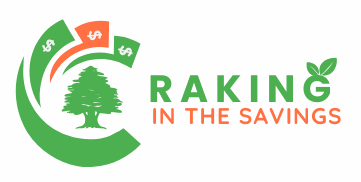Turning your garden into a source of income is not just a dream — it’s entirely possible with planning, effort, and creativity. Whether you’re looking to make a little extra on the side or build a full garden-based business, this guide lays out proven paths, trade-offs, and strategies to help you succeed.
For many of us, gardening starts as a passion project, a peaceful weekend hobby or a way to put fresh food on the table. But with a smart plan and the right approach, that same passion can blossom into a meaningful income stream. From selling fresh produce and herbs to offering garden design services or hosting workshops, there’s a surprisingly wide range of opportunities hiding in your backyard. And the best part? You don’t need acres of land or a massive investment, just a bit of creativity, consistency, and business sense.
Why Monetize Your Garden?
- You already invest time, space, and effort — monetizing adds reward.
- Diversifies income sources and builds resilience.
- Connects you with your local community.
- Allows you to turn a hobby into a business you enjoy.
But it’s not without challenges: market demand, seasonality, labor costs, and regulatory hurdles can affect profitability. Knowing these from the start helps you navigate smarter.
Proven Ways to Make Money With Your Garden

Here are core categories and examples to help you pick what fits your situation best:
1. Sell Produce, Plants & Garden Products
- Fresh produce & herbs: sell vegetables, fruits, edible flowers, and culinary herbs at local markets, to neighbors, or restaurants.
- Seedlings, cuttings & seeds: propagate extra plants and sell them; open-pollinated or heirloom seeds have niche appeal.
- Specialty or niche crops: grow microgreens, mushrooms, exotic herbs, or ornamental grasses not commonly available.
- Value-added products: dried herbs, teas, jams, herbal blends, infused oils, garden soaps, or homemade compost (black gold).
- Fresh cut flowers & bouquets: decorative and edible flowers can fetch good rates if packaged attractively.
2. Garden-Based Services & Experiences
- Garden design & installation: help clients design layouts, select plants, and execute the build.
- Consulting or coaching: use your garden know-how to guide others, offer garden audits, or custom plans. Gardenary’s founder, for example, scaled a consulting business this way.
- Garden maintenance/subscriptions: mow, weeding, pruning, soil care on a recurring basis.
- “You-Pick” gardens: allow customers to come in and harvest their own produce — you supply the plants and space.
- Rent out plots or allotments: if you have extra land, let others garden it under a rental agreement.
- Host events or workshops: garden tours, classes, DIY workshops (e.g. terrariums, wreaths), art classes in the garden.
Quick Comparison: Which Path Suits You?

Here’s a table comparing different monetization strategies based on startup cost, recurring effort, and income potential:
| Strategy | Startup Cost | Recurring Effort | Income Potential | Pros & Cons Summary |
| Sell produce/plants | Low to Medium | Moderate to High | Moderate | Good for gardeners with reliable yields; risk from pests/season |
| Value-added products | Medium | Medium | Moderate to High | Adds margin but needs processing, packaging, marketing |
| Garden services & consulting | Low to Medium | Moderate | High | Leverages your expertise; scalable |
| You-Pick / plot rentals | Low | Low to Moderate | Moderate | Provides passive income; location-dependent |
| Events / workshops | Low to Medium | Variable | Variable to High | Good side incomes; depends on attendance & demand |
Use this table to choose one or two paths to start with. You don’t need to do everything at once.
Steps to Launch Your Garden Income Stream
To grow from idea to income, follow this roadmap:
- Analyze your garden and market
- Size, soil, water, microclimate.
- What do people around you currently buy? What’s missing?
- Price points, regulations (local laws on selling food).
- Seasonal constraints.
- Select your focus
Choose 1–2 monetization paths that match your strengths and local demand. - Pilot with small batches
Test one product or workshop offering before committing full scale. - Branding & packaging
Catchy name, consistent labels, good photos, clear value messaging. - Sales channels
- Local farmers’ markets
- Social media / community groups
- Local restaurants, cafés, boutique shops
- Your own website or online marketplace
- Workshops and classes (in person or virtual)
- Scale wisely
As demand grows, reinvest profits into better tools, propagation areas, marketing, or hiring help. - Document & systematize
Keep detailed records of what works (crop yields, costs, customer feedback). This lets you refine, delegate, and even teach the system to others.
Tips from Experts & Real Gardeners

- Document your garden journey (photos, notes) — this content itself can be monetized (blogs, courses).
- Focus on niche crops rather than competing in saturated markets.
- Use permaculture or low-input techniques to reduce costs and improve soil health.
- Understand your local laws: some regions require permits to sell produce or handicrafts.
- Diversify income streams so seasonal gaps are covered.
- Build relationships locally — neighbors, restaurants, community groups.
FAQs
Do I Need a Large Garden to Make Money?
No. Many profitable gardens thrive on small plots by focusing on high-value crops, vertical growing methods, or niche products.
How Much Can I Realistically Earn?
It depends on location, scale, and business model. Some gardeners earn a few hundred dollars a month, while others grow full-fledged businesses. For example, Gardenary’s founder built a consulting business without even selling harvests.
Is It Legal to Sell Produce From Home?
That varies by local regulations. You may need permits, inspections, or compliance with food safety laws. Always check with municipal or regional authorities before selling.
How Do I Attract Customers?
Start by going local — use social media, community groups, and farmers’ markets. Offer classes or tastings to build trust, and connect with cafés or restaurants to expand your reach.
What Should I Avoid as a Beginner?
Don’t overcommit to too many products. Avoid overly common crops unless you have a competitive edge, and never neglect record-keeping or market research.
Also Read: Homemade coleslaw recipe
Final Thoughts
Your garden is more than a patch of soil — it’s a potential income source waiting to grow. By starting small, experimenting with different revenue streams, and staying consistent, you can transform a simple backyard into a thriving business. Focus on what you love most about gardening, pair it with market demand, and scale your efforts over time. With patience and planning, your garden can become a rewarding blend of passion and profit — proving that a little green thumb can lead to real green returns.










